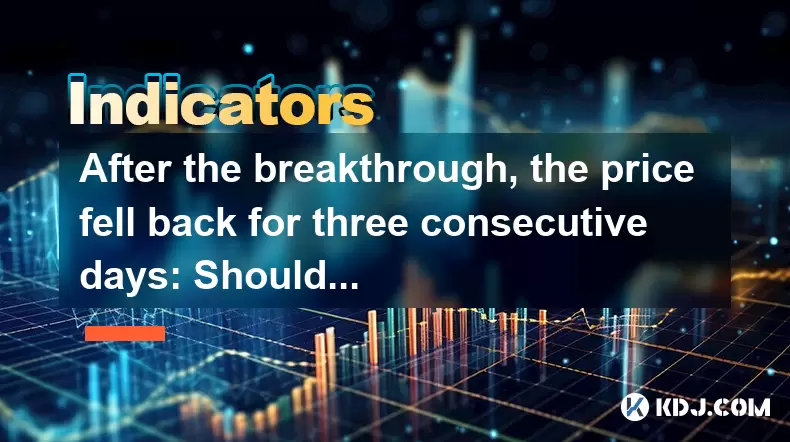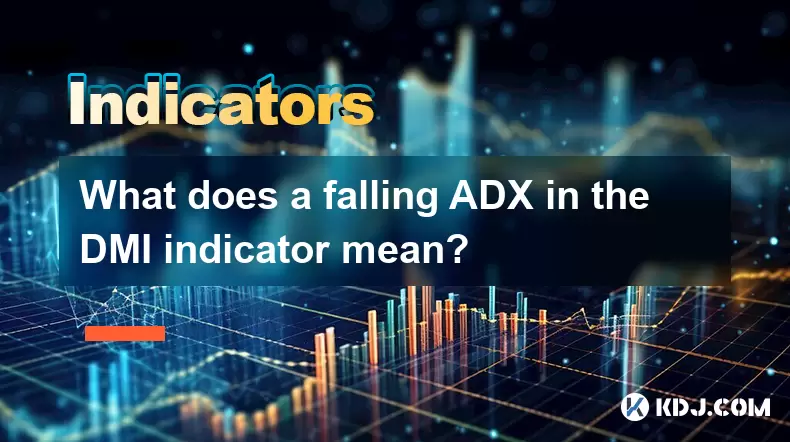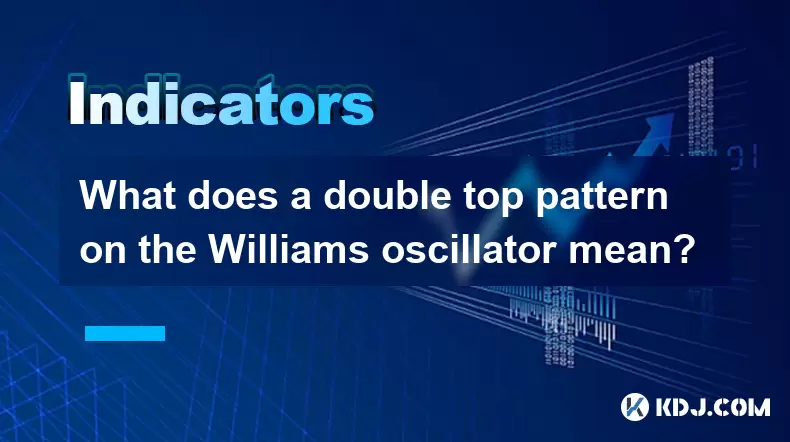-
 Bitcoin
Bitcoin $116700
0.24% -
 Ethereum
Ethereum $3973
4.34% -
 XRP
XRP $3.283
7.68% -
 Tether USDt
Tether USDt $1.000
0.01% -
 BNB
BNB $789.8
2.27% -
 Solana
Solana $176.2
3.31% -
 USDC
USDC $0.9999
0.00% -
 Dogecoin
Dogecoin $0.2238
5.14% -
 TRON
TRON $0.3389
-0.51% -
 Cardano
Cardano $0.7907
4.03% -
 Stellar
Stellar $0.4527
10.02% -
 Hyperliquid
Hyperliquid $41.07
4.27% -
 Sui
Sui $3.794
1.77% -
 Chainlink
Chainlink $19.49
10.40% -
 Bitcoin Cash
Bitcoin Cash $580.9
0.74% -
 Hedera
Hedera $0.2617
4.32% -
 Avalanche
Avalanche $23.41
3.67% -
 Ethena USDe
Ethena USDe $1.001
-0.03% -
 Litecoin
Litecoin $122.4
1.38% -
 Toncoin
Toncoin $3.364
1.49% -
 UNUS SED LEO
UNUS SED LEO $8.988
0.37% -
 Shiba Inu
Shiba Inu $0.00001295
2.82% -
 Uniswap
Uniswap $10.62
5.75% -
 Polkadot
Polkadot $3.922
4.46% -
 Dai
Dai $1.000
0.01% -
 Bitget Token
Bitget Token $4.494
2.15% -
 Monero
Monero $268.0
-1.30% -
 Cronos
Cronos $0.1523
3.68% -
 Pepe
Pepe $0.00001127
4.43% -
 Aave
Aave $285.4
4.85%
After the breakthrough, the price fell back for three consecutive days: Should I add positions or wait and see?
After a breakthrough and three-day fallback, analyze market sentiment, technical indicators, and volume before deciding to add positions or wait and see.
Jun 01, 2025 at 01:01 pm

After the breakthrough, the price fell back for three consecutive days: Should I add positions or wait and see?
The cryptocurrency market is known for its volatility, and the scenario where a price breaks through a significant level only to fall back for three consecutive days is not uncommon. This situation often leaves investors wondering whether they should add positions or wait and see. In this article, we will explore the factors to consider and the strategies you might employ in such a scenario.
Understanding the Breakthrough and Subsequent Fallback
When a cryptocurrency's price breaks through a resistance level, it often signals strong buying pressure and potential for further gains. However, if the price then falls back for three consecutive days, it could indicate several things. The initial breakout might have been driven by short-term speculation rather than fundamental strength, or the market might be undergoing a period of consolidation before the next move.
Analyzing Market Sentiment
Before deciding whether to add positions or wait and see, it's crucial to analyze the current market sentiment. Check social media platforms, forums, and news outlets for any significant developments or shifts in sentiment. If the sentiment remains positive despite the price drop, it might suggest that the market is still bullish on the cryptocurrency. Conversely, if sentiment has turned negative, it might be wise to wait and see how the situation develops.
Technical Analysis Indicators
Technical analysis can provide valuable insights into the market's direction. Look at key indicators such as the Relative Strength Index (RSI), Moving Averages, and Bollinger Bands. If the RSI is not in the overbought territory and the price is still above key moving averages, it might suggest that the pullback is a healthy correction rather than a reversal. Bollinger Bands can also help identify whether the price is within a normal range of volatility.
Volume Analysis
Volume is another critical factor to consider. If the volume during the breakout was high and the volume during the pullback is low, it could indicate that the sellers are not as committed as the buyers were during the breakout. On the other hand, if the volume during the pullback is high, it might suggest that the sellers are in control, and the price might continue to decline.
Risk Management and Position Sizing
Before making any decisions, it's essential to consider your risk management strategy. Determine how much you are willing to risk on this particular trade and adjust your position size accordingly. If you decide to add positions, consider using a dollar-cost averaging (DCA) strategy to spread out your purchases and reduce the impact of short-term volatility.
Adding Positions: When and How
If your analysis suggests that the pullback is a temporary correction and the long-term trend remains bullish, you might consider adding positions. However, do so cautiously and in small increments. Use limit orders to buy at specific price levels rather than market orders to avoid chasing the price. Set stop-loss orders to protect your investment in case the price continues to decline.
- Assess the market conditions and sentiment
- Analyze technical indicators and volume
- Determine your risk tolerance and position size
- Use limit orders to buy at specific price levels
- Set stop-loss orders to manage risk
Waiting and Seeing: When and Why
If the analysis suggests uncertainty or a potential reversal, it might be better to wait and see. Monitor the price action and wait for confirmation of a new trend before making any moves. Keep an eye on key support levels; if the price breaks below these levels, it could signal a more significant downturn. Stay updated with market news and developments that might affect the cryptocurrency's price.
- Monitor price action and wait for trend confirmation
- Keep an eye on key support levels
- Stay updated with market news and developments
Psychological Factors and Emotional Discipline
Emotional discipline is crucial in such situations. Avoid making impulsive decisions based on fear or greed. Stick to your trading plan and strategy, and don't let short-term price movements dictate your actions. Remember that the cryptocurrency market can be highly unpredictable, and patience often pays off.
Frequently Asked Questions
Q: How can I tell if a breakout is genuine or a false signal?
A: To determine if a breakout is genuine, look at the volume during the breakout. A genuine breakout is often accompanied by high volume, indicating strong buying interest. Additionally, check if the price sustains above the breakout level for a significant period. If the price quickly falls back below the breakout level, it might be a false signal.
Q: What are some common mistakes investors make after a price pullback?
A: One common mistake is chasing the price and buying at the peak of the pullback, only to see the price continue to decline. Another mistake is failing to set stop-loss orders, which can lead to significant losses if the price drops further. Additionally, some investors might panic sell during a pullback, missing out on potential gains if the price recovers.
Q: How important is it to consider the overall market trend when deciding whether to add positions or wait and see?
A: The overall market trend is crucial when making investment decisions. If the broader market is in a bullish trend, it might support the idea of adding positions during a pullback. Conversely, if the market is bearish, it might be wiser to wait and see, as the pullback could be part of a larger downtrend.
Q: Can using a trading bot help in such scenarios?
A: Trading bots can be useful in executing strategies based on predefined rules. However, they are not a substitute for thorough analysis and understanding of market conditions. If you decide to use a trading bot, ensure that it is set up with appropriate parameters to handle pullbacks and breakouts effectively. Regularly monitor and adjust the bot's settings based on the latest market data.
Disclaimer:info@kdj.com
The information provided is not trading advice. kdj.com does not assume any responsibility for any investments made based on the information provided in this article. Cryptocurrencies are highly volatile and it is highly recommended that you invest with caution after thorough research!
If you believe that the content used on this website infringes your copyright, please contact us immediately (info@kdj.com) and we will delete it promptly.
- Roman Storm, Funding Effort, and the Looming Defense Retrial: A New York Minute on the Tornado Cash Case
- 2025-08-09 02:50:14
- Crypto's Wild Ride: XRP, Dogecoin, and the Altcoin Surge You Can't Ignore
- 2025-08-09 02:50:14
- Elon Musk, Bitcoin, and the Enduring Power of Approval: A Crypto Love Story?
- 2025-08-09 03:50:15
- Ruvi AI: The Next Big Thing After Ripple on CoinMarketCap?
- 2025-08-09 03:50:15
- Floki Price Surges: Elliott Wave and Fibonacci Setups Point to Potential Gains!
- 2025-08-09 02:30:16
- Pepe Price, RTX (Remittix?) & the $10K ETH Dream: NYC Crypto Chatter
- 2025-08-09 02:30:16
Related knowledge

What does it mean when the TRIX indicator suddenly diverges downward after a long period of convergence?
Aug 09,2025 at 12:56am
Understanding the TRIX Indicator in Cryptocurrency TradingThe TRIX indicator, or Triple Exponential Average, is a momentum oscillator used in technica...

Why is the rise limited after a MACD bottoming divergence?
Aug 09,2025 at 12:07am
Understanding MACD Bottoming Divergence in Cryptocurrency TradingThe MACD (Moving Average Convergence Divergence) is a widely used technical indicator...

What does it mean when the OBV continues to rise but the price is trading sideways?
Aug 08,2025 at 10:35pm
Understanding On-Balance Volume (OBV)On-Balance Volume (OBV) is a technical indicator that uses volume flow to predict changes in stock or cryptocurre...

What does a falling ADX in the DMI indicator mean?
Aug 09,2025 at 03:16am
Understanding the ADX and DMI Indicator FrameworkThe DMI (Directional Movement Index) is a technical analysis tool developed by J. Welles Wilder to id...

What does a double top pattern on the Williams oscillator mean?
Aug 09,2025 at 02:36am
Understanding the Williams %R OscillatorThe Williams %R oscillator is a momentum indicator developed by Larry Williams to identify overbought and over...

What is a nonce and how is it used in Proof of Work?
Aug 04,2025 at 11:50pm
Understanding the Concept of a Nonce in CryptographyA nonce is a number used only once in cryptographic communication. The term 'nonce' is derived fro...

What does it mean when the TRIX indicator suddenly diverges downward after a long period of convergence?
Aug 09,2025 at 12:56am
Understanding the TRIX Indicator in Cryptocurrency TradingThe TRIX indicator, or Triple Exponential Average, is a momentum oscillator used in technica...

Why is the rise limited after a MACD bottoming divergence?
Aug 09,2025 at 12:07am
Understanding MACD Bottoming Divergence in Cryptocurrency TradingThe MACD (Moving Average Convergence Divergence) is a widely used technical indicator...

What does it mean when the OBV continues to rise but the price is trading sideways?
Aug 08,2025 at 10:35pm
Understanding On-Balance Volume (OBV)On-Balance Volume (OBV) is a technical indicator that uses volume flow to predict changes in stock or cryptocurre...

What does a falling ADX in the DMI indicator mean?
Aug 09,2025 at 03:16am
Understanding the ADX and DMI Indicator FrameworkThe DMI (Directional Movement Index) is a technical analysis tool developed by J. Welles Wilder to id...

What does a double top pattern on the Williams oscillator mean?
Aug 09,2025 at 02:36am
Understanding the Williams %R OscillatorThe Williams %R oscillator is a momentum indicator developed by Larry Williams to identify overbought and over...

What is a nonce and how is it used in Proof of Work?
Aug 04,2025 at 11:50pm
Understanding the Concept of a Nonce in CryptographyA nonce is a number used only once in cryptographic communication. The term 'nonce' is derived fro...
See all articles

























































































